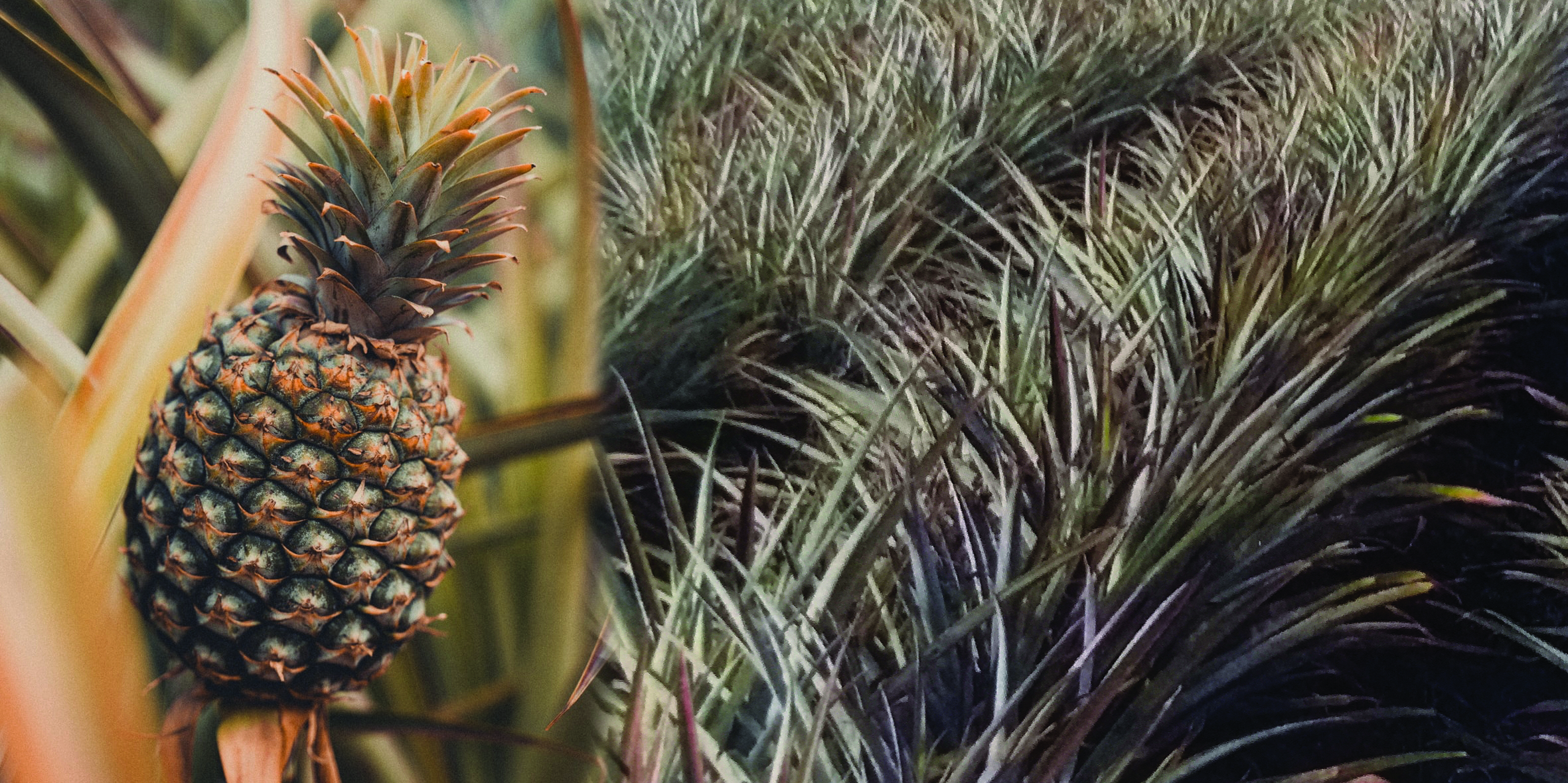b l o g
f e b r u a r y 2 0 2 1

Land preparation is a critical stage of the pineapple planning production
By Aad Van Santen, Lead Author of Pineapple Production In Vanuatu
Before any final preparation for planting is possible, the land has to be cleared of obstructing trees/ shrubs, grasses, and deep rooted weeds that will hamper proper cultivation of pineapple. The shallow rooted pineapple is heavily impacted by competing weeds around the pineapple beds.
When clearing bush however, it is advised, when possible to leave some deep rooting shrubs and trees that are not an immediate obstruction to the pineapple cropping. Some shrubs and trees will help in the prevention of soil erosion. Avoid removal of larger trees by directing the pineapple blocks around or beside the trees.
Shallow rooted trees and shrubs that threaten high competition with pineapple in the higher soil layers, such as ‘vaivai’ tree or guava, should be removed. In case of long grass and small shrubs, these are first cut with cane knife or tractor and slashed on the area that is planned for planting in the coming 3 to 6 months. Obstructing small trees and larger shrubs are cut down with a chain saw and the root stumps pulled out with a tractor or hired bulldozer.
Pre-planting Weed Control
All large branches are removed from the field and burned in heaps. Remaining grass should be ploughed in for organic material incorporation where possible. Large grass clumps may need to be dug out with a digging fork or spade, making sure all the roots of this grass have been removed.
Alternately, the field can be sprayed with a systemic herbicide like Glyphosate to kill the remaining roots, weeds and hard to control grasses. This is especially important for grasses like sedge and nut grass. It should also be realized, that glyphosate herbicide penetrates through the leaves of the weeds and is not taken up through the soil and roots. When Glyphosate comes in contact with soil, it becomes inactive.
When using any kind of chemical, be sure to read and follow all directions carefully. Direct all questions or concerns to your local dealer where the chemical was purchased. If you choose to use a contact-herbicide such as Gramoxone, you should be aware of the fact that this herbicide only kills the exposed pat of the plant and a small amount of root structure near the surface. Gramoxene may not be the best herbicide for deep and thick rooted weeds like sedges and nut grasses.
It is important to kill all hard to fight weeds before planting, since the pineapple plants will remain in the field for at least 3 years, and during that time these hard to remove weeds, which compete for nutrients and light with the crop. This extra work before planting will make a big difference over time.
The systemic herbicide is allowed to do its work for at least 2 to 3 weeks, without burning or removing the dried up aerial parts of the weeds. Although seemingly dead and dried-out shortly after spraying, the chemical still has to penetrate in live root tips to kill the total plant. If burned or pulled earlier, small portions of the toots remain alive and will produce large and difficult to kill weeds, especially in cases of sedge and nut grass.
For the herbicide Glyphosate (48% concentration), 100-150ml can be mixed in a 15 litre knapsack to obtain a strong and fast effect on the sprayed plants. However, if the area to be sprayed is neat fields or compounds with desirable plants a lower concentration is to be used to avoid damage on wanted plants caused by “drift spray.” If you are unsure about what you are doing, be sure and consult with your local Extension Officer.
Ploughing and Final Soil Preparation
After the “hard to kill” weeds are removed, the field can be made slightly level with a medium tree trunk behind the tractor or draft animal to fill the uneven spots where shrubs and trees are pulled out leaving holes in the filled. If no equipment is available to pull the tree trunk, this levelling of the uneven spots where shrubs are pulled can be done by hand with a spade or fork.
Now the field is ready to be prepared into a fine tilth, which can be done;
(1) By hand with digging fork, spade and hoe; or
(2) With a tractor plough, rake or disc harrow
Depending on the structure of the soil (heavy loamy clay or light loamy sand), the growing field should completed hand dug or ploughed one to three times in order to prepare a sufficiently deep (150-200mm) and fine tilth. A final harrowing or ridging/bed preparation is done after final lay-out and planting preparation.
Preparation of Planting Beds
On level to slightly sloping fields for mono cropping of pineapple, the ideal shape of the cleared field should be such that it fits a multiple of units that can accommodate 1000 plants.
This guide uses as example dimensions of 12m x 15.5m per unit of 1000 plants, allowing for 8 double rows of 125 plants at a density of 50,000 plants/ha. This has been the most practical found in crop maintenance, spraying and harvesting, but alternative dimensions of units of 1000 plants that can be used.
Shapes of blocks with multiple units of 1000 plants do not necessarily have to be rectangular, but can be shaped to;
(1) Follow contour lines on steeper slopes, or
(2) To avoid mid-field trees and other obstructions, or
(3) If field shape or slope dictates.
In the case of using inter cropping methods with alternative strips of pineapple and other crops, single beds of pineapple can be planted with three lines per bed, again at a spacing of 1.4-1.5m from center bed to center bed, and bed length of 16.5m to accommodate 400 plants per bed.
Next: Field Cropping Layout
